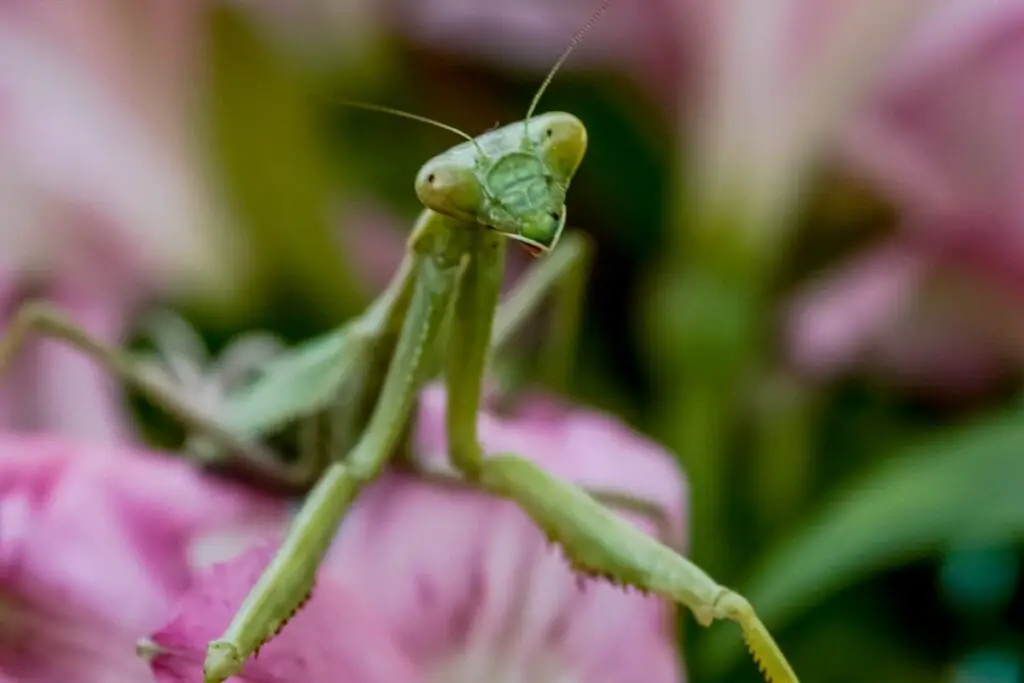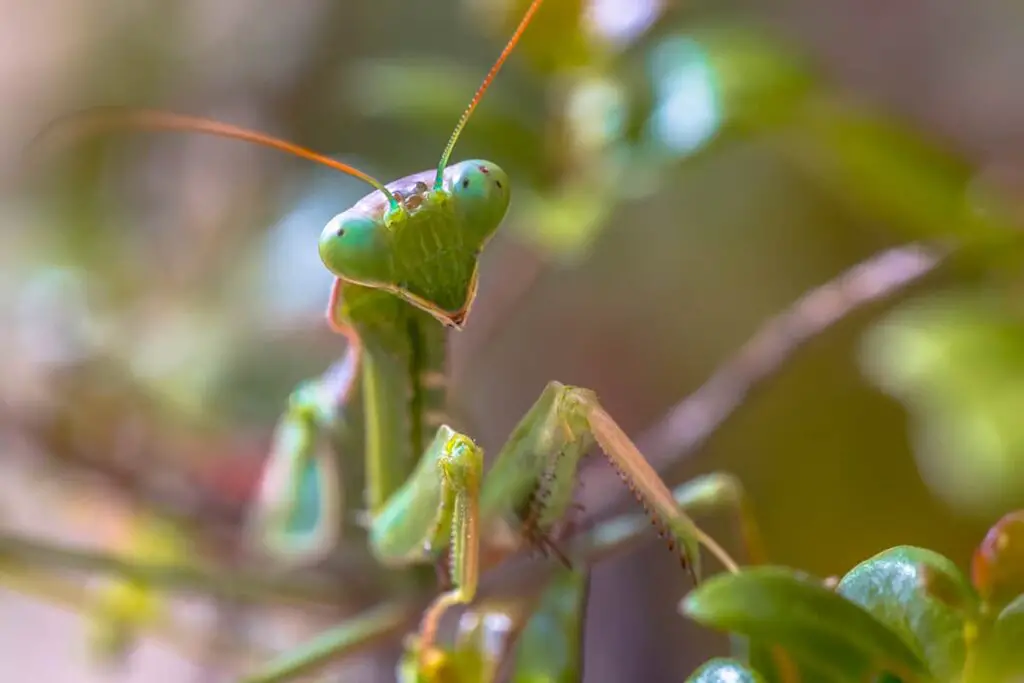When you begin the intriguing journey into the world of mantis breeding, you’ll be diving into a process that blends natural wonder with careful nurturing. A fascinating cycle that spans just about a year, mantis breeding will have you observing the full lifespan of these unique insects. From mature adults that engage in a delicate mating dance to the safeguarding of their eggs through the cooler months, it’s a seasonal story that continues year after year.
Understanding the mantis’ growth stages is key to successful breeding. Both the male and female mantises need a period to mature post their final molt, with the latter requiring around 4 weeks and the former about 2 weeks. Careful feeding leading up to and after mating ensures the health of both, especially the female, as it increases the chances of successful egg-laying and may influence her post-mating appetite.
Successfully mating mantises means not only managing their life cycle but also setting the stage for the next generation. After laying their eggs in a protective capsule, the adult mantises’ life cycle typically concludes, passing on the torch as their offspring emerge with the warmth of spring. Witnessing this cycle can be a rewarding experience for any enthusiast.
Mantis Species Overview
When you’re passionate about praying mantises, it’s fascinating to notice the variety among the different species. Each of over 2,400 species has unique characteristics, but here, you’ll find a snapshot of some intriguing types you might encounter or consider for breeding.
- Spiny Flower Mantis: Recognized for its vibrant colors, this species mimics flowers to attract prey.
- Devil’s Flower Mantis: Boasting an impressive size, these mantises are known for resembling parts of the devil’s flower for camouflage.
- Ghost Mantis: With a leaf-like appearance, these mantises are ideal for those interested in a species that is less demanding.
- European Mantis: As the name suggests, this species is commonly found across Europe and is notable for its green color.
- Conehead Mantis: Distinct with their elongated, cone-shaped heads, these are a sight to behold for enthusiasts.
Each species has different requirements for care and breeding. For example, some might require a specific humidity level, while others may need particular vegetation to thrive and mimic their natural habitat. Your choice may depend on the environment you can provide for them and the visual characteristics you find fascinating.
Breeding Note: Breeding success largely hinges on accurately pairing mature males and females of the same species. Do remember that larger species may take longer to reach sexual maturity, so patience is key.
For detailed guidance on breeding specific mantis species, you can refer to A helpful practical guide on mantis breeding, which can help you plan your breeding program effectively. If you are keen on understanding more about the distinctiveness of individual species, you might find valuable information by exploring the variety of mantis species, each with its fascinating facts and features.
Mating and Reproduction
When you observe praying mantises, their mating ritual is quite unique. The process begins with courtship, where the male must approach the female cautiously. This is because the females are notorious for sometimes eating the males after or during mating—a behavior known as sexual cannibalism.
During the peak mating months, which usually occur in warmer seasons, you’ll notice the males performing complex dances to attract females. If the female is receptive, she will allow the male to climb onto her back and mate. Successful mating can lead to the female laying hundreds of eggs. These eggs are encapsulated in a frothy substance that hardens to protect them until hatch.
Here are the key points about mantis reproduction:
- Courtship: Males perform dances to woo the females.
- Mating: If successful, the male mounts the female’s back.
- Sexual Cannibalism: Females may sometimes eat the males post-mating; however, this is not as common as you might think and occurs 13 to 28 percent of the time.
- Egg Laying: Females produce a protective case for hundreds of eggs post-mating.
Remember, identifying a female from a male mantis is crucial if you’re interested in breeding them, as males are generally slimmer and have longer antennae. If you’re fascinated by the reproductive cycle of these insects, it’s important to respect and protect them, especially during their mating season.
Lifespan and Longevity
In discussing the life of a praying mantis, you’ll explore how these insects progress from egg to adult, with each stage bringing its own time frame and challenges.
Egg Stage Duration
After a female praying mantis lays her eggs in the autumn, the eggs remain dormant until they hatch in the spring. These eggs are encased in a protective foam mass called an ootheca, which can contain anywhere from 10 to 400 eggs. The time spent in the egg stage typically spans several months, depending on the species and environmental conditions.
Nymph Development
Once hatched, the young mantises, known as nymphs, undergo several stages of development called instars. Nymphs resemble small adults and will molt multiple times, each molt signifying a new instar. The maturation process for nymphs varies by species, but generally takes around 4 to 6 weeks for smaller species and longer for larger ones.
Adult Lifespan
As adults, praying mantises experience their final stage of life. For most species, the adult lifespan can range between 4 to 6 months. Larger species have been known to live up to 12 months in the wild, and under optimal conditions in captivity, they can sometimes live as long as 14 months. However, it’s important to note that after mating in the fall, male mantises usually die, often due to female aggression.
Environmental Impact on Lifespan
When you’re considering the lifespan of a mantis, your mantis’s environment plays a pivotal role. Factors such as temperature, humidity, and habitat can either shorten or extend their life.
Temperature: Mantises thrive in temperatures that mimic their natural habitat. If the temperature is too low or too high, it can lead to stress and a shortened lifespan. For instance, the Chinese mantis breeds during the warmer months, suggesting that they prefer and prosper in warmer conditions (ADW: Tenodera aridifolia: INFORMATION).
Humidity: Proper humidity levels are essential. Many mantis species lay eggs in foamy structures that harden to protect the young. These oothecae need a certain level of humidity to prevent desiccation and ensure successful hatching (Praying Mantis Egg).
Housing and Resources: A well-maintained enclosure with ample space can improve your mantis’s quality of life. Orchid mantises, for example, may live between 6 months to a year depending on their environment and available resources. It is critical to simulate a natural and healthy habitat (Orchid Mantis Care Guide).
- Nutrition: A diet that meets their nutritional requirements will strengthen their immune system, directly influencing longevity.
- Stress Factors: Protection from predators and minimizing handling will decrease stress, providing a more conducive environment for a longer life.
Remember, your actions and the environment you provide can significantly affect the lifespan of your mantis. A stable and suitable environment mimics a mantis’s natural ecosystem, supporting a healthy and potentially longer life for these fascinating insects.
Frequently Asked Questions
In this section, you’ll find concise answers to common questions about the breeding and lifespan of mantises in captivity. These responses aim to provide you with clear and specific information tailored to your curiosity about these fascinating insects.
What is the typical lifespan of a mantis in a captive environment?
A mantis under captivity generally lives about 6 to 12 months, depending on the species and care provided. Proper environmental conditions and diet can significantly influence their lifespan.
How long is the mating period for praying mantises?
The mating period for praying mantises can vary but typically lasts from a few hours to the entire day. The breeding process can be delicate, as females may exhibit aggressive behavior towards males post-mating.
What are the stages of the life cycle in praying mantises?
Praying mantises go through three key life stages: egg, nymph, and adult. After hatching, they experience several nymphal stages known as instars, where they shed their skin as they grow before reaching adulthood.
Can you detail the diet necessary for mantises throughout their life cycle?
Nymphs require small prey like fruit flies, while adults can handle larger insects such as crickets or moths. Throughout their life cycle, a mantis should have a diet consisting of live insects that are appropriately sized for each growth stage.
What is the average lifespan of a female mantis after reproduction?
Following reproduction, a female mantis may live for several weeks to a few months. The act of reproduction and subsequent egg-laying can contribute to a shorter post-reproductive lifespan.
How long do praying mantises typically live after they lay eggs?
After laying eggs, praying mantises often live for only a few days to a couple of weeks, as laying eggs is one of the final acts in the life cycle before their natural death.
Driven by a passion for those tiny creatures that rule our world, we at Bug Domain strive to be your go-to resource for information on insects.




